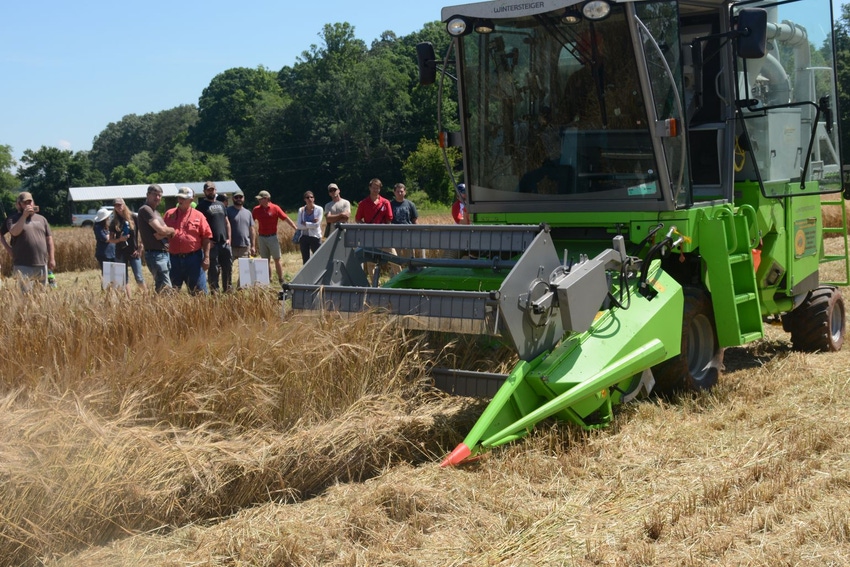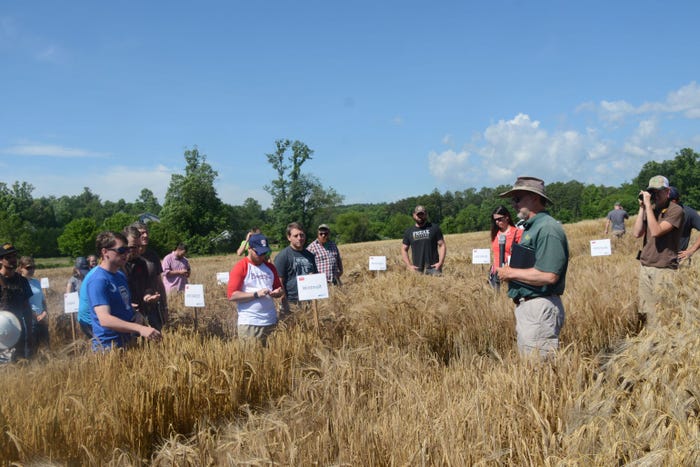
Barley has been grown in North Carolina for more than 200 years, but only since the advent of craft brewing in the state has there been an interest in growing malting barley. Malting barley pays a premium over feed barley, but with that premium comes more production challenges.
“Feed barley producers don’t spend a lot of dollars per acre to grow barley and treat it more like a cover crop. If you’re growing winter barley for malting, it really needs be treated like a certified seed crop. It can’t be planted and ignored like many small grains used as winter cover,” said North Carolina State University Extension small grains specialist Angela Post.
Intensive management is critical because malting houses demand high-quality barley that will be used in beer. Post says malting barley requires a germination rate of 99 percent if it’s going to be used for brewing.
“You must put a fungicide on malting barley if you’re going to be growing it for production in North Carolina. We don’t want any aflatoxin in those grains,” Post said at the Western North Carolina Malting Barley Field Day at the Mountain Horticultural Crops Research and Extension Center in Mills River May 31.
For feed barley, an aflatoxin level of five parts per million is allowed. “An elevator is not going to dock you unless it more than that,” Post said. However, for malting barley that five parts per million is unacceptable. “In a malt house, the level of acceptance is one part per million. But what does a maltster want? None. Zero. We don’t want aflatoxin in our beer,” she said.
That’s why carefully managing malting barley like a certified seed crop is critical. Post said efforts must focus on producing nice plump grains that are needed for good malting quality.
“For that we need protein levels that are a little bit lower that what we would expect if we were growing a feed barley,” she stressed. “In that regard you need to be really careful with the nitrogen rate so we can keep that protein in the grain down at an acceptable level.”
In the meantime, David Marshall, a USDA/ARS professor and research leader in plant pathology at N.C. State, says the most important thing to remember about producing malting barley in North Carolina is that it has to be harvested on time.
“That more than anything else that we look at in our North Carolina situation is the key,” he said. “We need to get malting barley out of the field when it needs to come out because we are always up against rain and other climatic factors that can really cause problems.”
In fact, N.C. State’s malting barley varietal development work is focusing on barleys that offer a very short dormancy period following harvest. Marshall says finding barleys that can be harvested right on time so they will germinate when it is the right time to germinate is vital.
“We are moving in the direction toward having something that has been bred for North Carolina production, especially for western North Carolina where there has been such a big interest in malt and also in brewing,” he said.

David Marshall, USDA/ARS professor and research leader in plant pathology at North Carolina State University, with microphone, says the most important thing to remember about producing malting barley in North Carolina is that it has to be harvested on time.
About the Author(s)
You May Also Like






